After I had finished with my visit to the American Museum of Natural History, I continued walking along the streets of New York. First I turned into the 67th Street in order to get to the Columbus Avenue which further towards the lower sections of Manhattan extends into the 9th Avenue.
Namely, in the block created by the Columbus Avenue and the Amsterdam Avenue (that extends into the 10th Avenue), when they cut the 62nd and 65th Streets, there is the Lincoln Centre, i.e., officially the Lincoln Center for the Performing Arts. This complex includes the Metropolitan Opera, the New York City Ballet, New York Philharmonic, a theatre, etc. In addition to these famous world institutions, the Lincoln Centre complex also includes famous Juilliard School of Music, although the latter is located on the other side of the 65th Street.
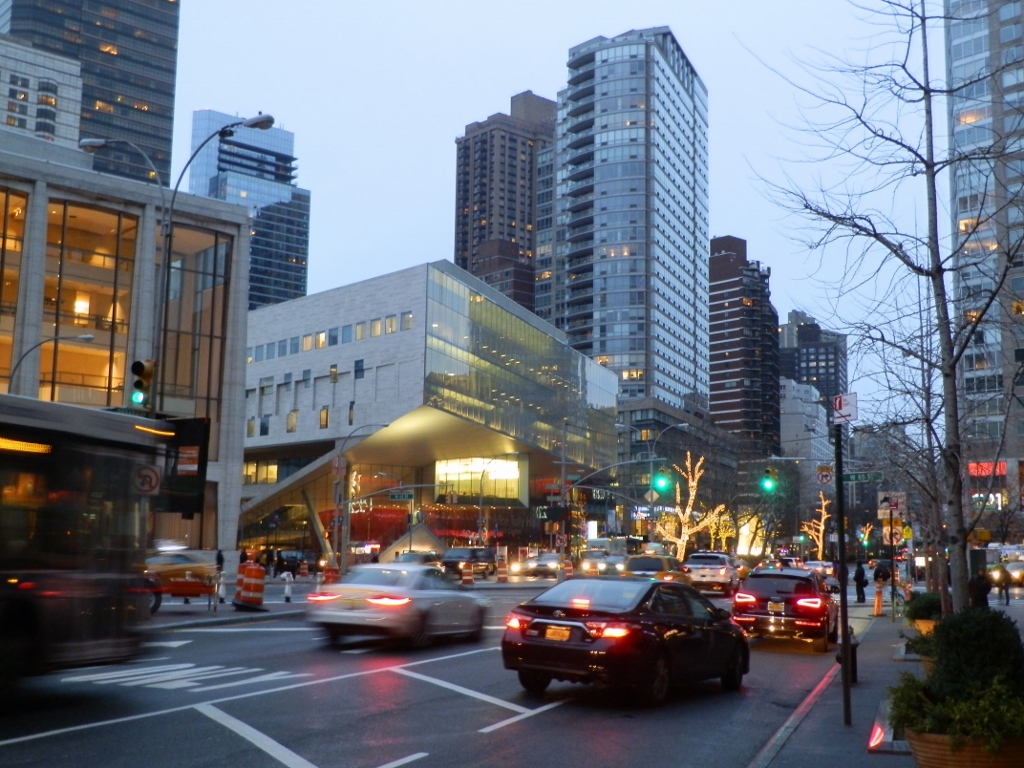 Juilliard School of Music, at the corner, a part of the Lincoln Centre
Juilliard School of Music, at the corner, a part of the Lincoln Centre
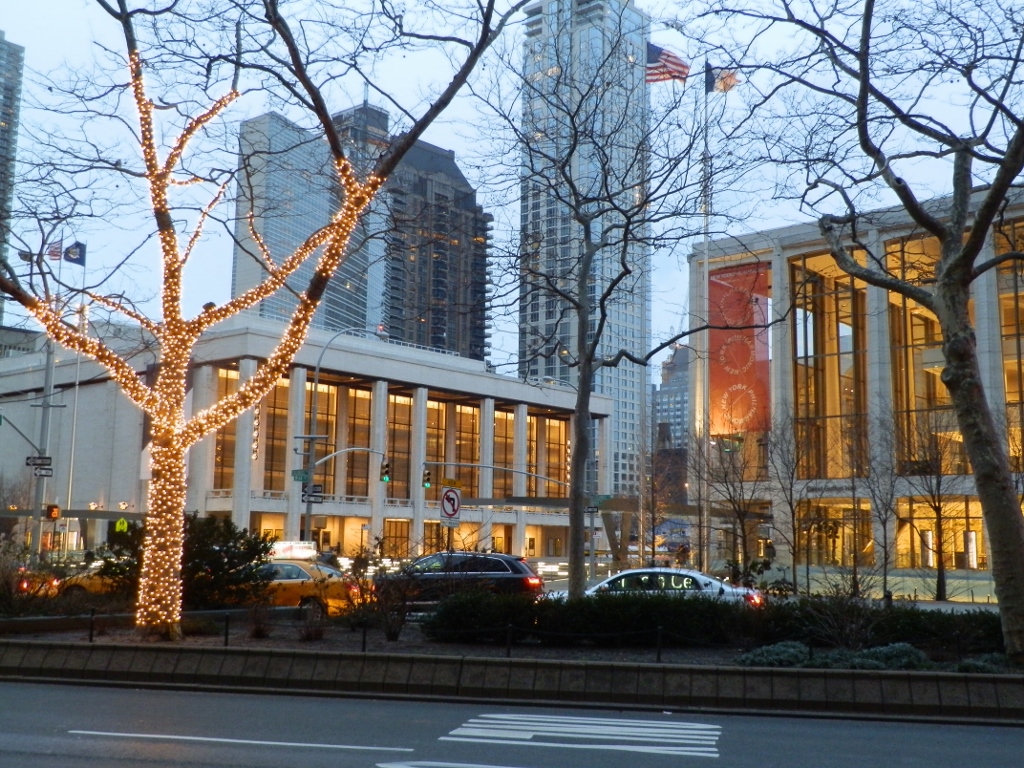 Lincoln Centre
Lincoln Centre
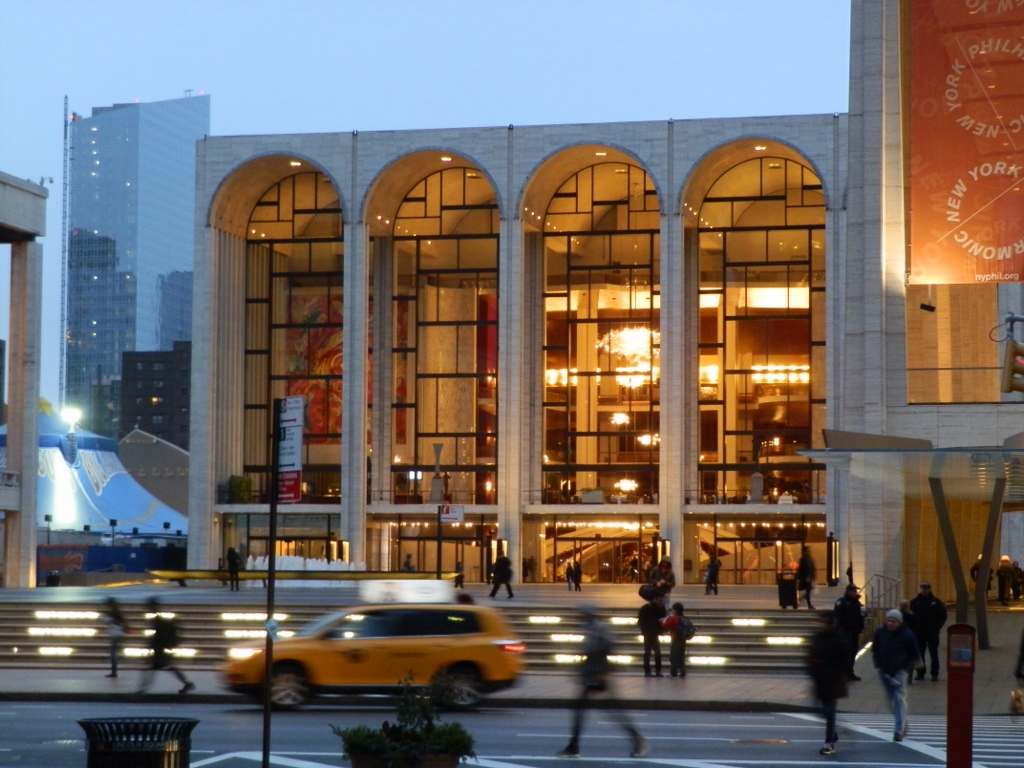 Lincoln Centre, the Metropolitan Opera House
Lincoln Centre, the Metropolitan Opera House
After a short break at this place, I continued walking on along Broadway which cuts the Columbus Avenue at the Lincoln Centre. When Broadway reaches the next avenue which is called the 8th Avenue in the sections towards the lower parts of Manhattan (before that it passes by the Central Park as a boarder-line street and is therefore called Central Park West) this area is called the Columbus Circle. This is the point where the southwest corner of the Central Park is located.
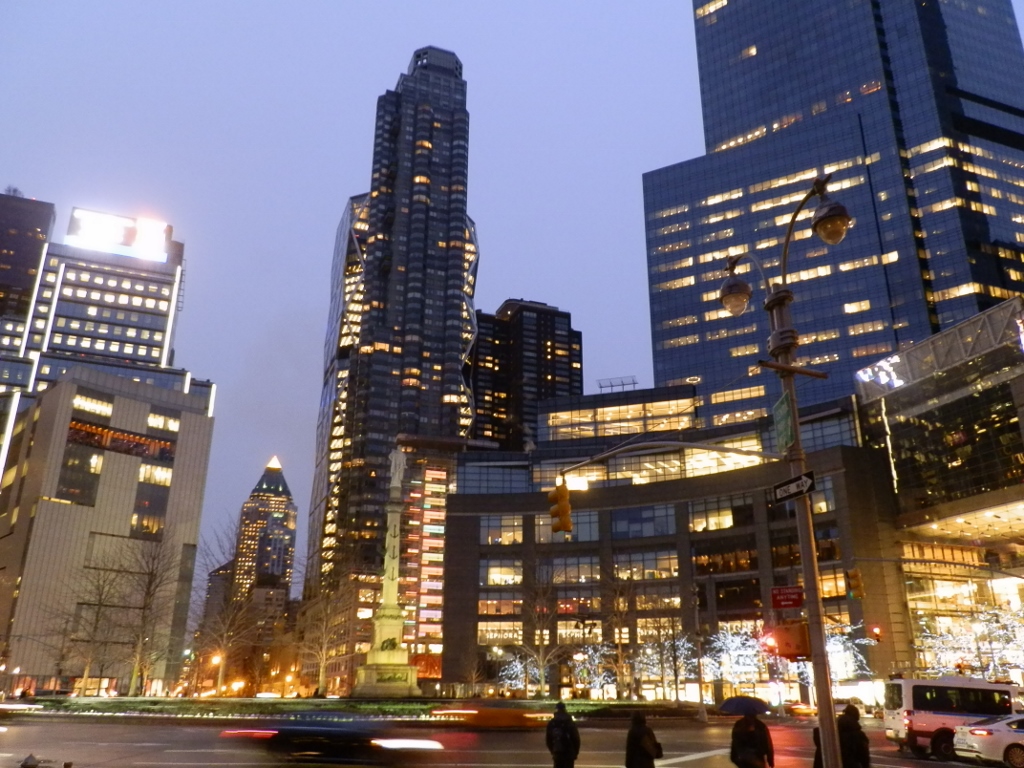 Columbus Circle
Columbus Circle
As I was waiting for the green light to cross the street, beside me I noticed Malcolm Gladwell, a journalist and an author of a number of best-sellers which I find quite interesting and pleasant to read, as he was running in place being in full jogging “uniform.” When the green light came on, he put his body into a higher gear and jogged off into the park. No matter how big New York City is, it is still much smaller than what may seem at first sight.
Since it was January, it fell dark relatively early so I headed towards the flat where the younger part of my friends live. I came there a little earlier, so I took this time to go to the banks of the East River from where I had a wonderful view at Manhattan at night.
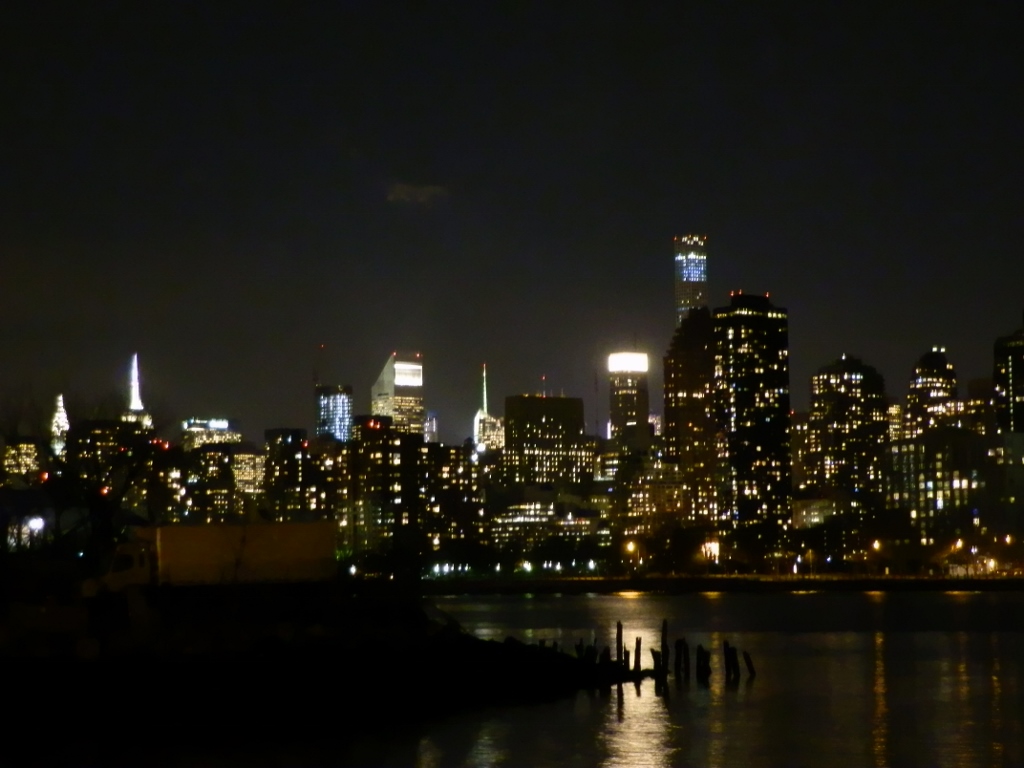 View at Manhattan at night
View at Manhattan at night
When back in the day I came to New York for the first time, almost every evening Velislav and I went by car from Queens to Manhattan and ever since then I have been in love with this fantastic scenery that I could see on the horizon, created by the large number of buildings and that enormous multitude of lit windows. At that time I kept trying to take a photo of the sight using the camera I had, but I just could not make a satisfactory photo. It was always blurred. Now this photo-taking is not as important any more, although now I manage more or less, but I still enjoy in this imposing impression which the night silhouette of Manhattan makes on me.
The next day, my plans also involved a walk around the city and a visit to a museum, but to start with I took the underground again and again I enjoyed the view at Manhattan as the train passed through Queens.
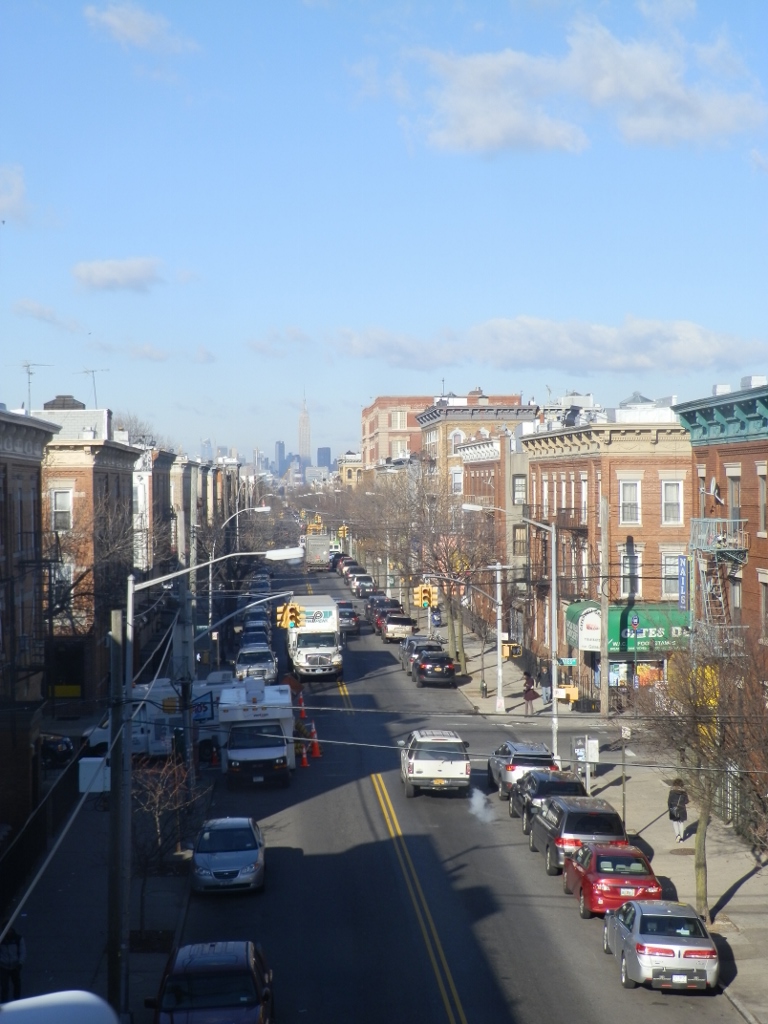 Although pale, it is still possible to see the Empire State Building in the distance
Although pale, it is still possible to see the Empire State Building in the distance
It was sunny again, but very cold, with a very strong wind on top of it, which meant that the sensation of cold was quite pronounced. Luckily, I had good, warm clothes on, so everything seemed more bearable.
I had decided to continue with my visits to New York museums and so I came to the Solomon R. Guggenheim Museum. The museum was named after Solomon Guggenheim, a businessman and a collector of art, who founded it in 1939 as the Museum of Non-Objective Painting. The museum’s collection includes pieces from the Impressionists to the modern art, and in addition to the pieces of art exhibited here, the museum is also well known and recognisable by its shape. I don’t know much about architects, but even I have heard of the author of this museum. It is Frank Lloyd Wright.
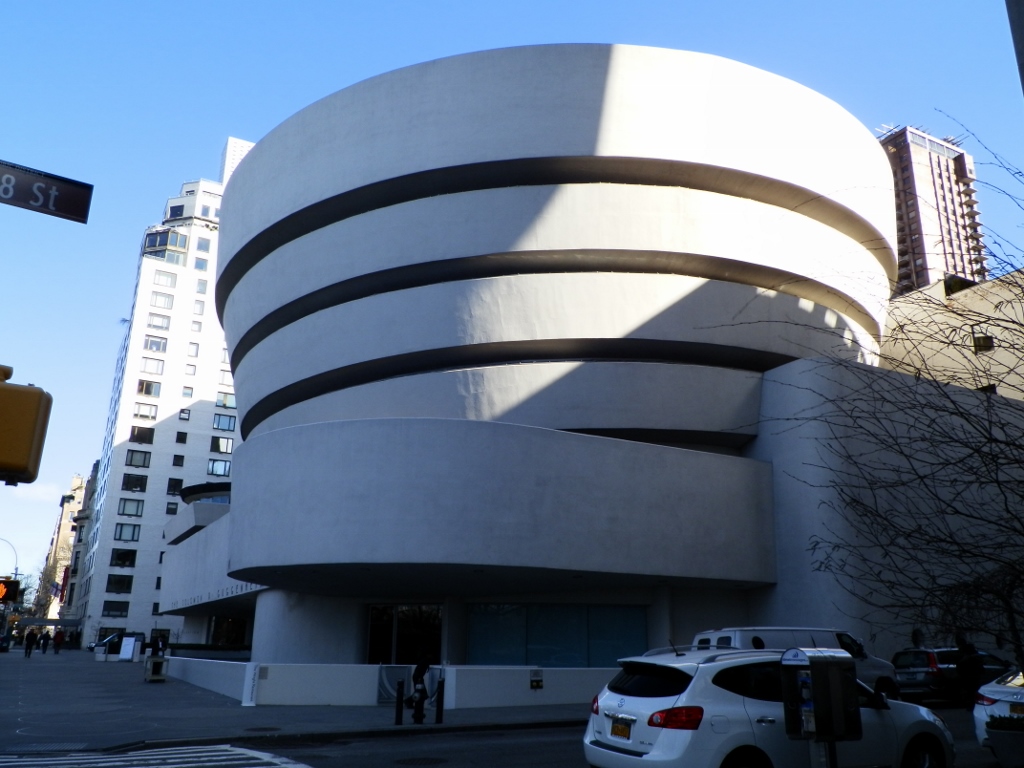 The Solomon R. Guggenheim Museum
The Solomon R. Guggenheim Museum
The museum is situated on the 5th Avenue, right across the Central Park, and I entered it, but also came out of it unusually fast. Namely, the main exhibition was closed because of some works and I was not particularly keen on visiting some special exhibits that were still open to visitors. Instead, I decided to adjust my plan for the day, so I first just crossed the street and started to go down the park, in parallel to the 5th Avenue.
Right there, within the Central Park there is a large reservoir named after Jacqueline Kennedy Onassis.

As it may be seen, the day was beautiful indeed in terms of the blue sky and the sun, but, as I’ve said, it was cold with a very strong wind, which created certain problems for me when I stopped to take photos, taking my gloves off. For this reason, I tried to take photos quickly and then immediately to put the still warm gloves back on my freezing hands.
I even ventured a little into the park, but I did not stay there for too long, returning rather to the 5th Avenue.
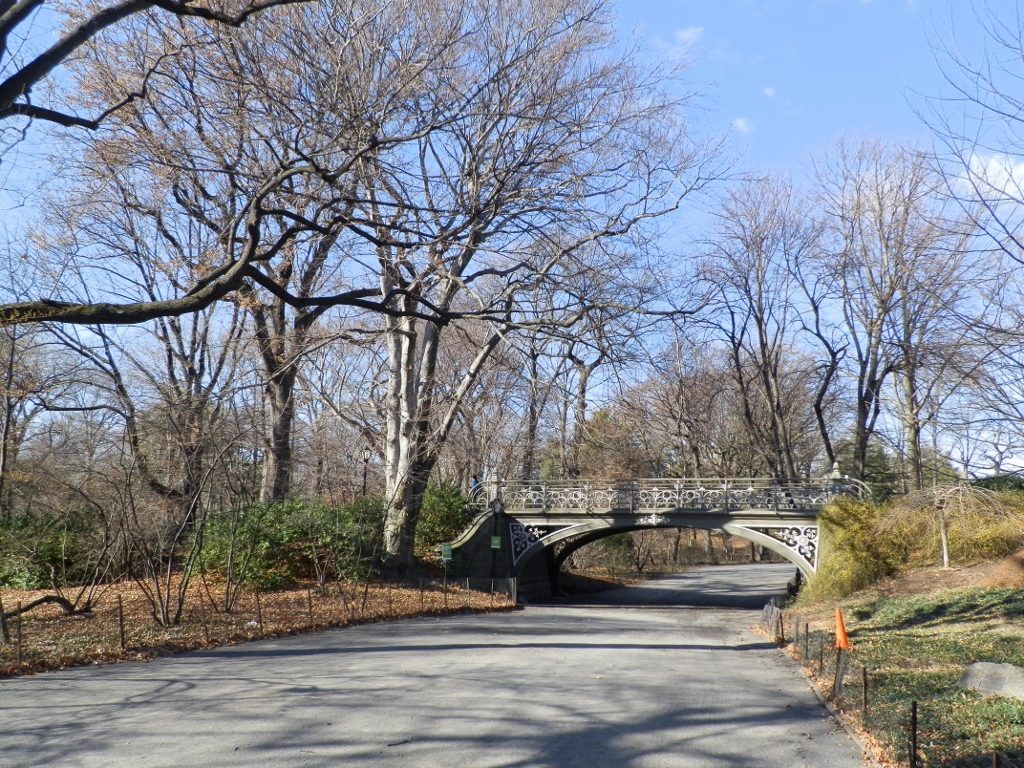 Detail from the Central Park
Detail from the Central Park
The reason was that I wanted to go to the Metropolitan Museum of Art which is in fact located within the park itself, while its entrance is from the 5th Avenue.
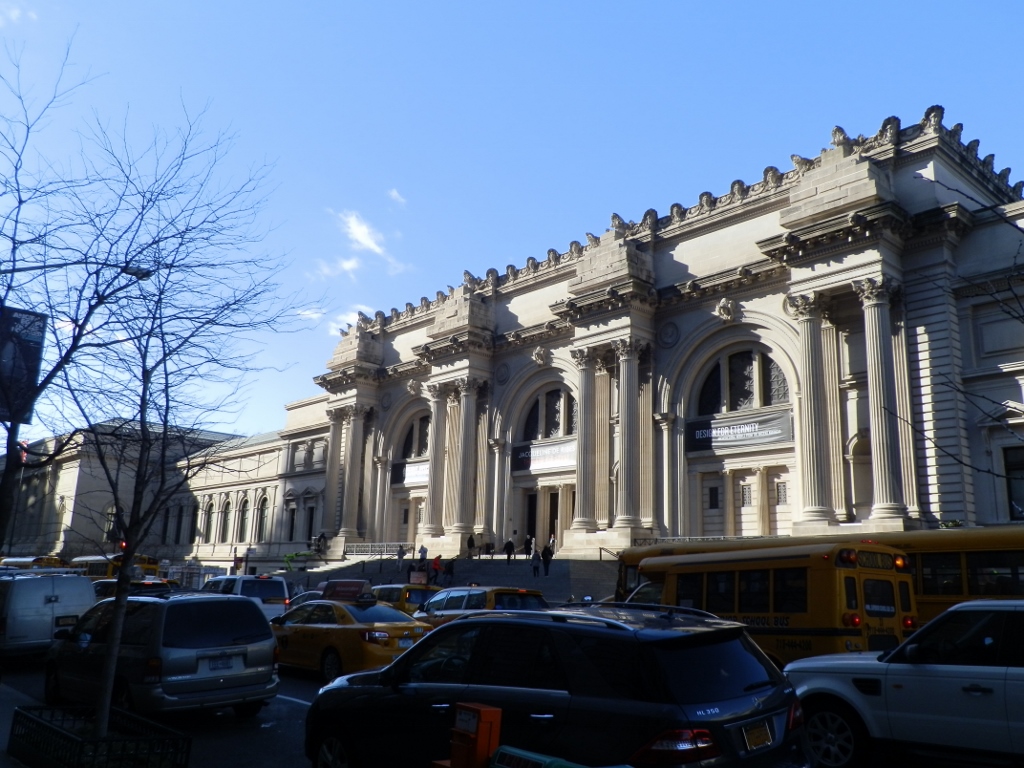 The Metropolitan Museum of Art
The Metropolitan Museum of Art
This is also one of the several huge museums that exist in the world and that should be visited one small section at the time simply because they are just too big. Impressive, that’s for sure, but still just far too big. For this reason, one should normally make a plan and concentrate only on a couple of sections at the time. However, I practically had the whole day at my disposal, so I still decided to try and visit as many sections as possible. On the other hand, there is such an indescribable multitude of exhibits (this is the biggest museum in the USA) and I don’t know art and the history of art so well to look carefully at each object or sculpture, so I was not too worried. I just started with a nice stroll around the museum.
To start with, I went to the section that contains the Greek and Roman Art.
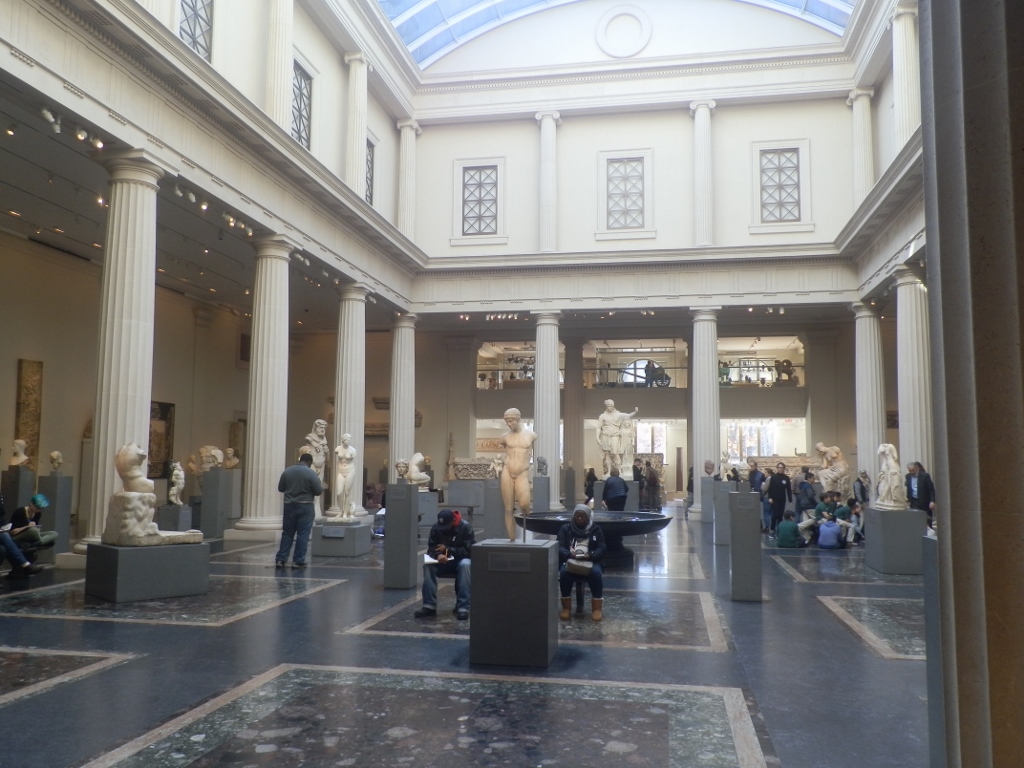 Sculptures from the Antiquity
Sculptures from the Antiquity
In addition to the sculptures from antique Greece and Rome, in this section the museum also has painted walls from this period and in this way it is possible to recreate the appearance of the villas in which the wealthy residents from the shores of the Mediterranean used to live more than 2000 years ago.
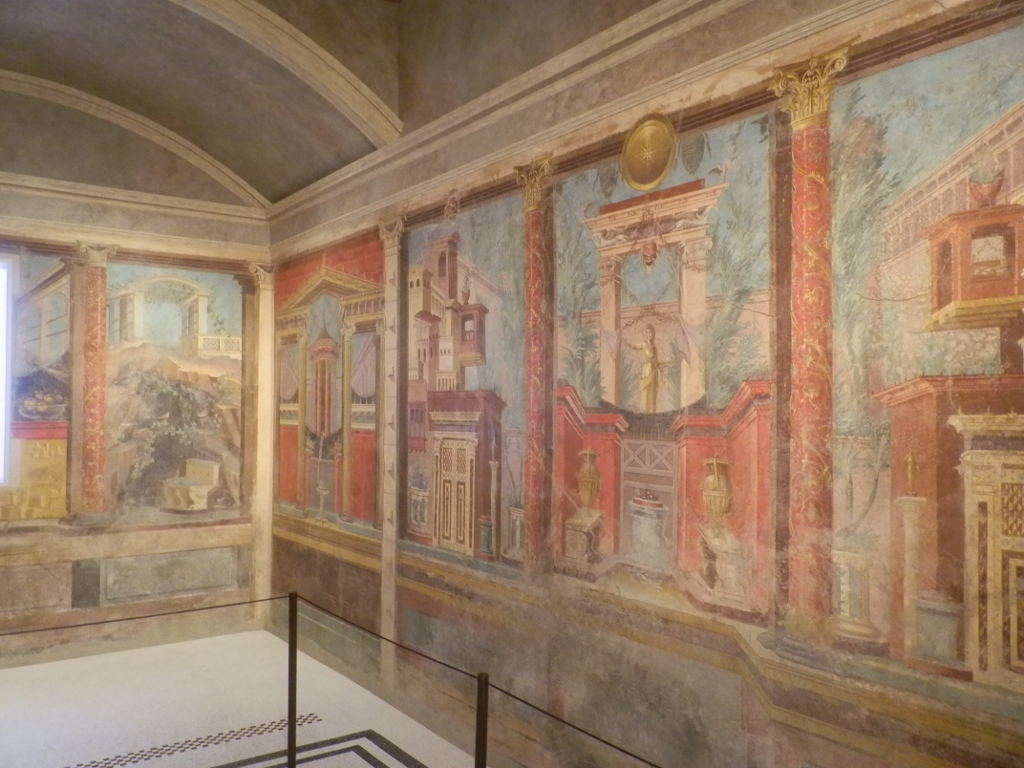 Walls that used to adorn an antique villa
Walls that used to adorn an antique villa
Still, the sculpture of ancient Greece and Rome is what has survived the most to the present days, such as, for instance, this Roman sarcophagus from the 3rd century of the CE.
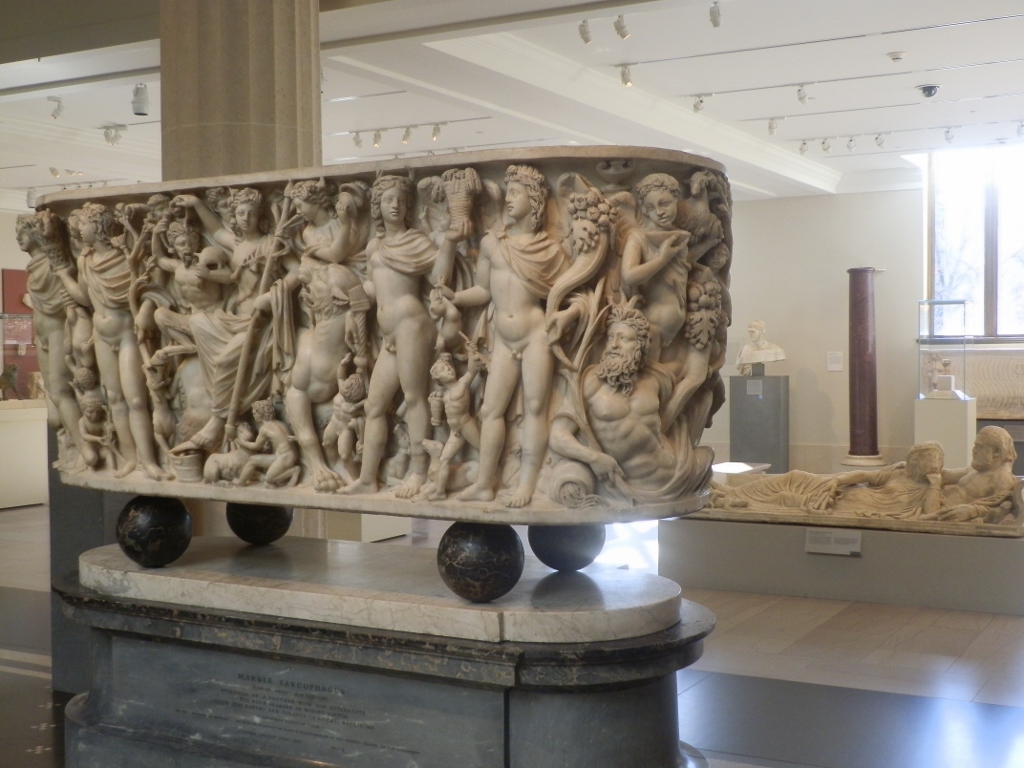 Marble Roman sarcophagus from the 3rd century of the CE
Marble Roman sarcophagus from the 3rd century of the CE
Then I moved on to the section that covers the Arts of Oceania. For me, this is a rather distant type of art, since I have rarely been exposed to it, but I didn’t find it any less interesting because of this.
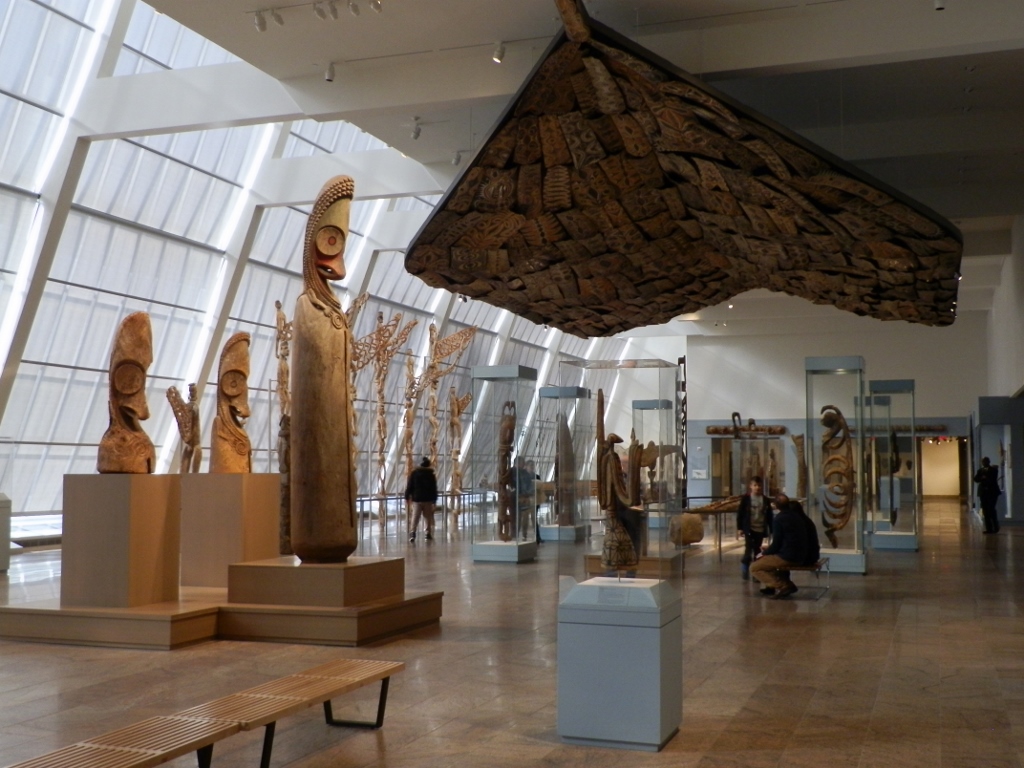 Hall exhibiting the Arts of Oceania
Hall exhibiting the Arts of Oceania
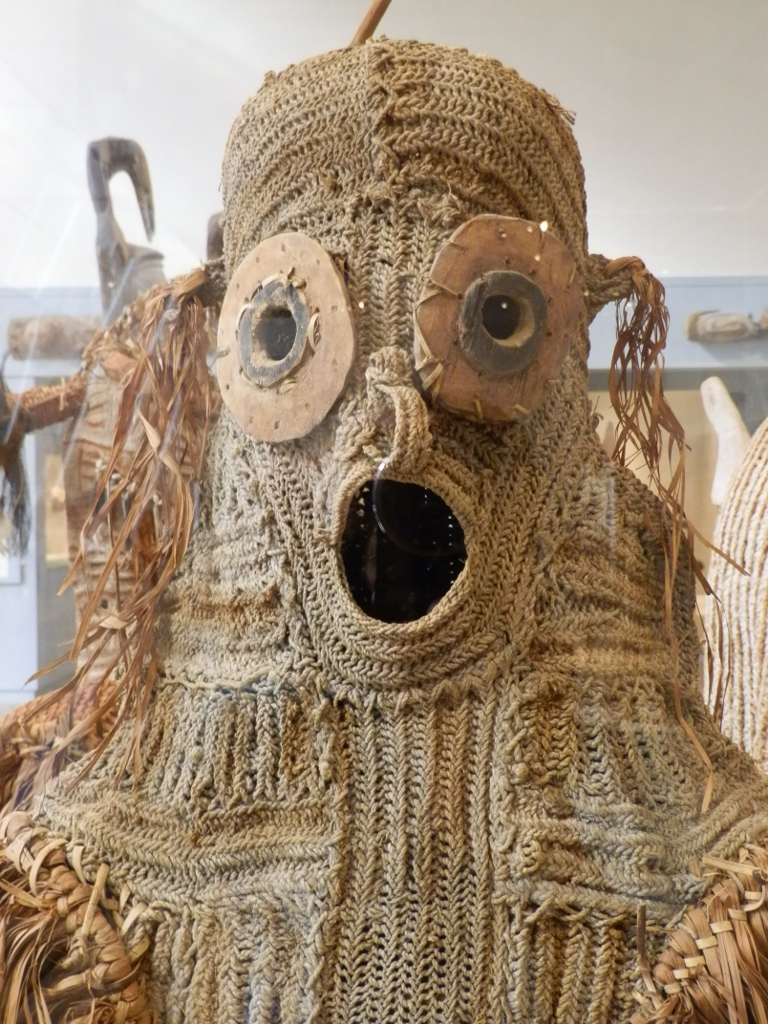 An exhibit from the section showing the Arts of Oceania
An exhibit from the section showing the Arts of Oceania
Here, too, I came across a number of exceptionally interesting pottery objects that belonged to the culture of the Moche tribe from Peru which flourished from 400 to 600 of the CE.
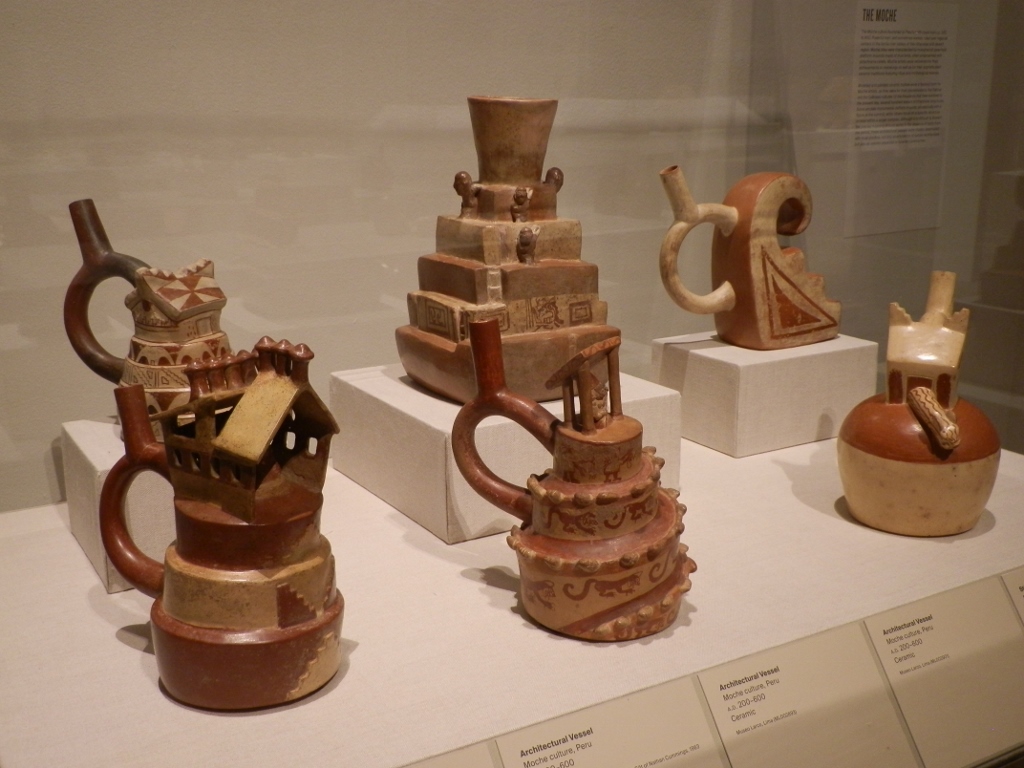 Moche tribe pottery
Moche tribe pottery
Then I entered the part of the museum that exhibits artwork, mostly European, from the first half of the 20th century. Here it is possible to see some of the pieces done by Georges Braque, Pablo Picasso, Diego Rivera, Wassily Kandinsky, Joan Miró, Amadeo Modigliani, Marc Chagall, etc. I can’t say I’m a connoisseur of the modern art or that I like it all. Absolutely not. I see art as something that can spontaneously stir up some emotions within us regardless of our education and not as something that requires ten PhDs, knowledge of the history of art or the given style or the detailed biography of an author in order to understand when, why and how the artist wanted to express what they have expressed.
Because of this, I visit museums and exhibitions quite leisurely and I merely observe whether I like something as a composition or a selection of colours. I must admit though, that from time to time I do like to read the explanations with larger museums sometimes put beside the exhibit, but I’m not too preoccupied about this. Most often it is emphasised that these pieces are worth enormous amounts of money, but this is a question of marketing and those who look at the art as a good investment opportunity and therefore it is very important to have long and detailed stories about such pieces. For me, the value of an artwork is not linked to any monetary amount, but rather whether I like looking at it or not.
For instance, for the following painting by Georges Braque with a very imaginative title –Candlestick and Playing Cards on a Table – the museum itself wrote that it was possible to see a corner of a table, that there was a base of the candlestick and also that there were two playing cards (the ace of hearts and the six of diamonds), but now it is up to the observers to look for these items on the canvass.
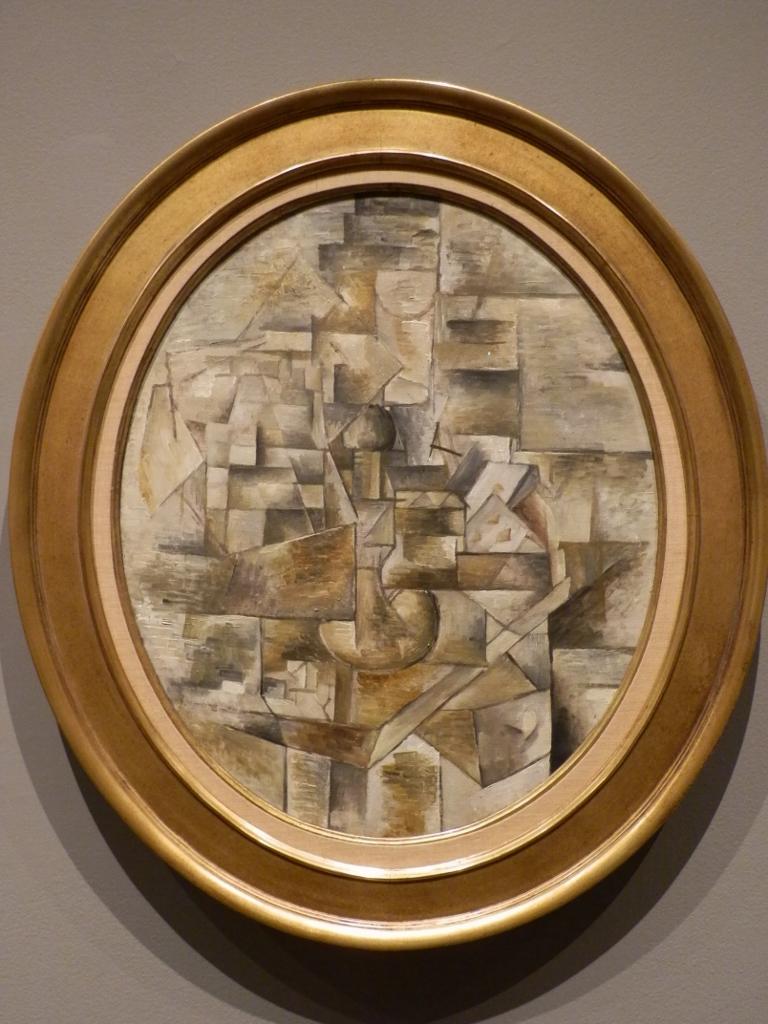 Candlestick and Playing Cards on a Table, Georges Braque
Candlestick and Playing Cards on a Table, Georges Braque
There is also the Head of a Woman here, the first Cubist sculpture by Pablo Picasso.
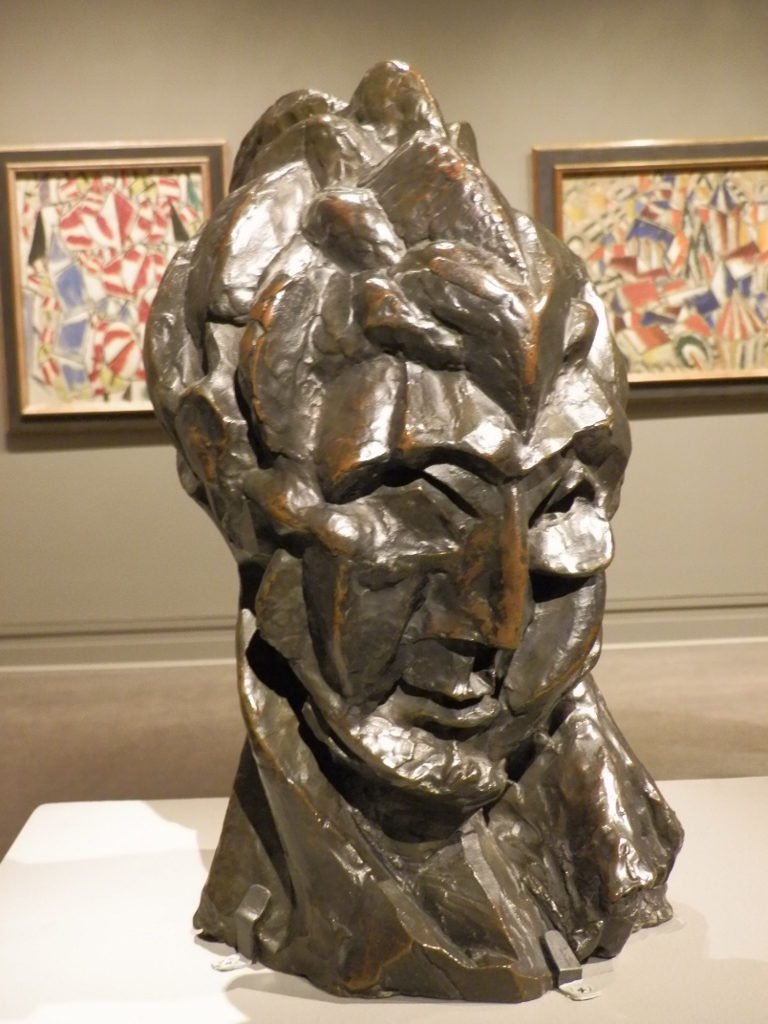 Head of a Woman, Pablo Picasso
Head of a Woman, Pablo Picasso
Here is yet another sculpture of an almost identical title done by Amadeo Modigliani, Woman’s Head, while behind it on the wall there is Picasso’s painting of Gertrude Stein.
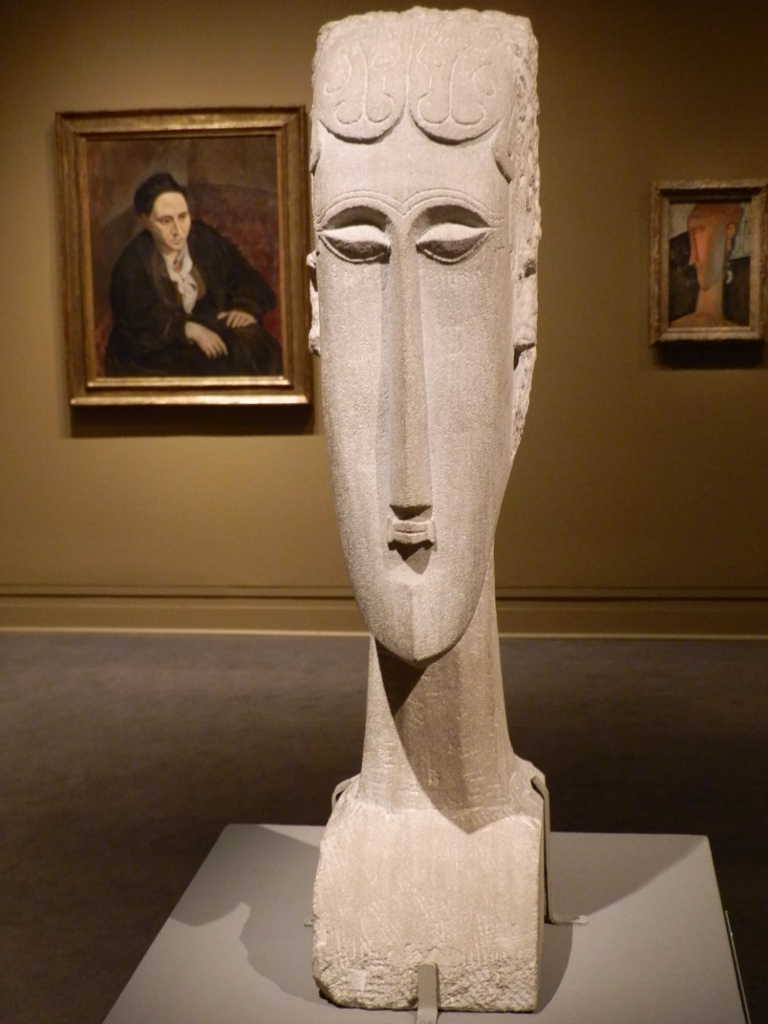 Woman’s Head, Amadeo Modigliani; Picasso’s Gertrude Stein is to the left of the photograph
Woman’s Head, Amadeo Modigliani; Picasso’s Gertrude Stein is to the left of the photograph
The museum also exhibits three of Fabergé’s eggs. It is interesting that all three belong to a foundation, but it is not at all unusual that owners of famous artwork (individuals or institutions) hand over their property to famous museums in order for it to be exhibited and in order for more people to be able to enjoy in it.
By the way, Fabergé’s eggs are the Easter eggs made for the needs of the Russian dynasty Romanov by the jewellery company Fabergé from Sankt Petersburg. Some have been lost, but to the present times over 40 of them have survived and they are in different private or state collections.
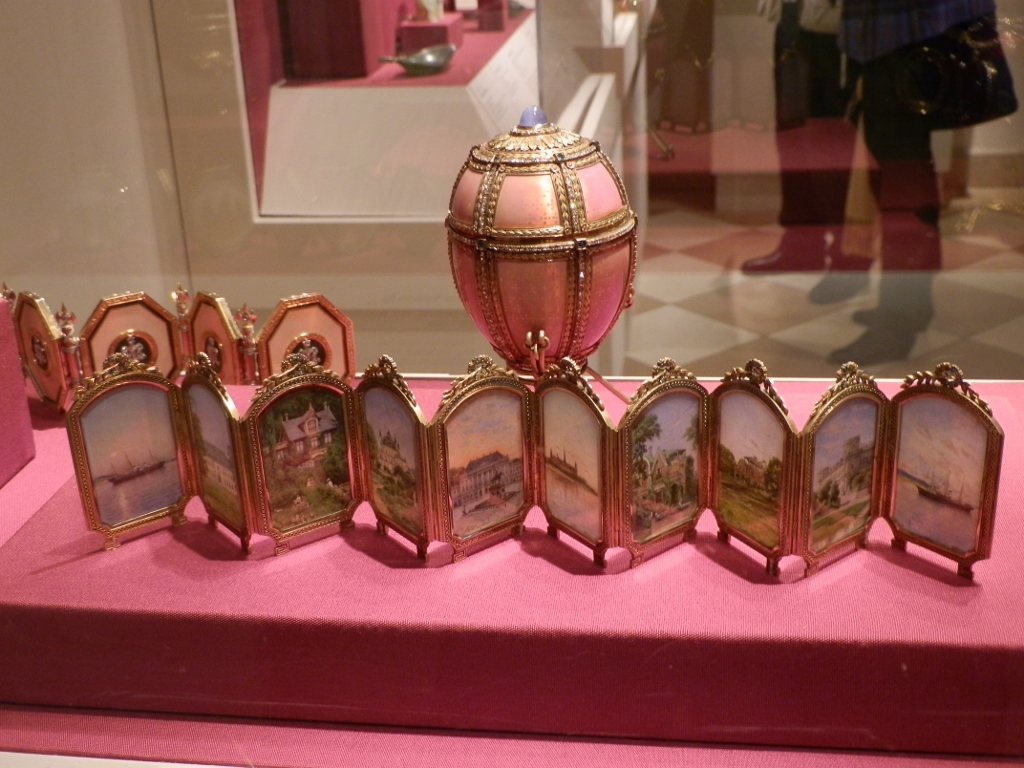 Imperial Danish Palaces Egg
Imperial Danish Palaces Egg
In addition to the large rooms and halls that exist within the museum, one occasionally comes across some spaces that seem more as inner courtyards or spaces between two buildings, but these sections are protected as well and they are used as the space for exhibits.
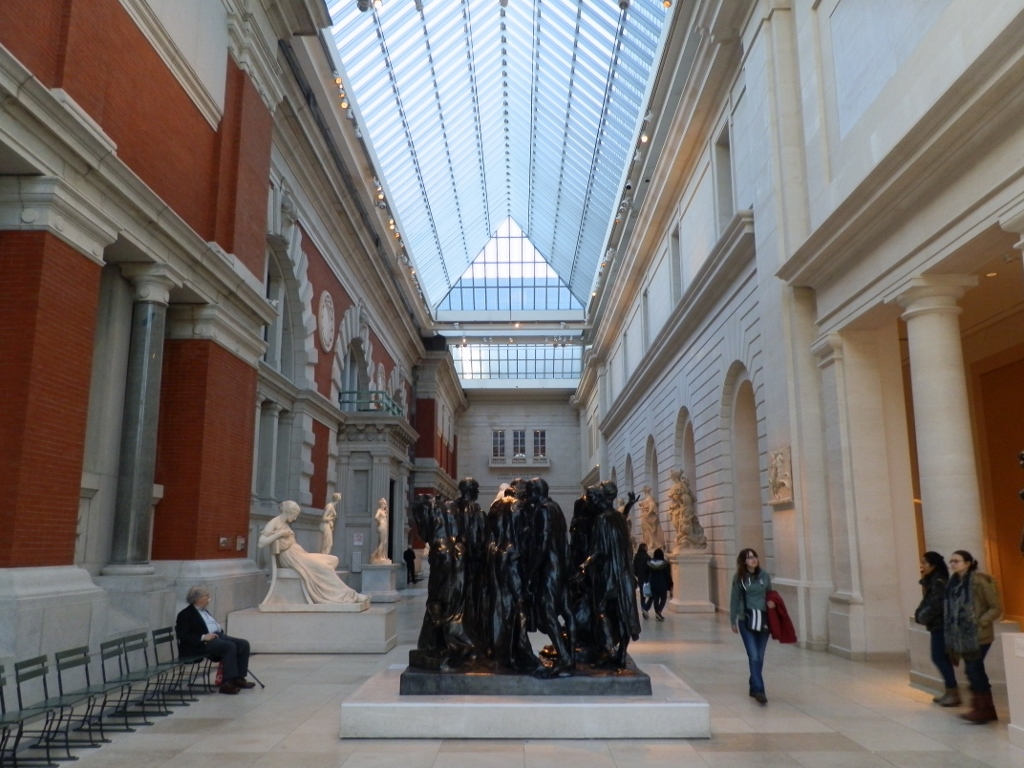 Roofed “courtyard” within the museum with Rodin’s Burghers of Calais
Roofed “courtyard” within the museum with Rodin’s Burghers of Calais
By the way, since the photo above shows the Burghers of Calais, let me explain something that kept puzzling me for years and this is: how is it possible that serious museums can exhibit the same artwork. As it turned out, this is quite an accepted practice in the case of sculptures, specifically in the case of casts, such as the Burghers of Calais. Rodin finished his sculpture in 1889 and the original cast was installed in Calais, France, in 1895. Under the laws of France, it is permitted to make a total of 12 original casts of Rodin’s pieces and thus one of them, from 1985, is found here, at the Metropolitan Museum of Art.
After this I entered the part with the Impressionists and thus there were pieces by Renoir, van Gogh, Gauguin, etc.
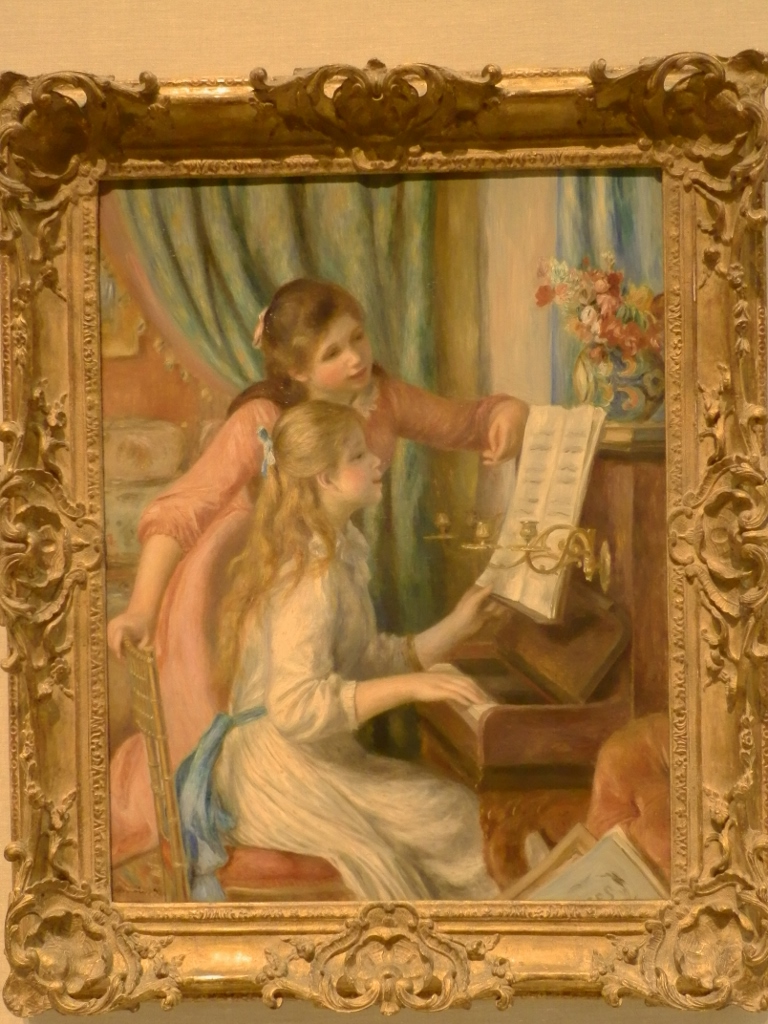 Two Young Girls at the Piano, by Auguste Renoir
Two Young Girls at the Piano, by Auguste Renoir
And then I came to a spacious hall in the shape of a roofed courtyard (Charles Engelhard Court) where there were exhibits as well, while everything looked particularly nice because of the sunny day.
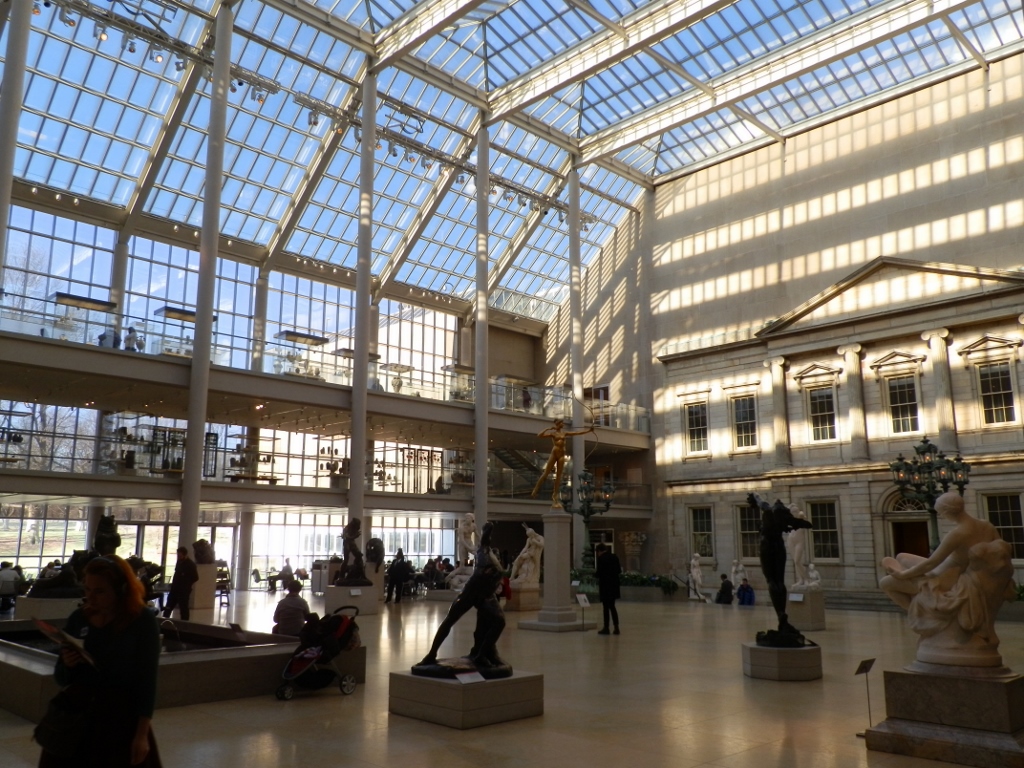 Charles Engelhard Court
Charles Engelhard Court
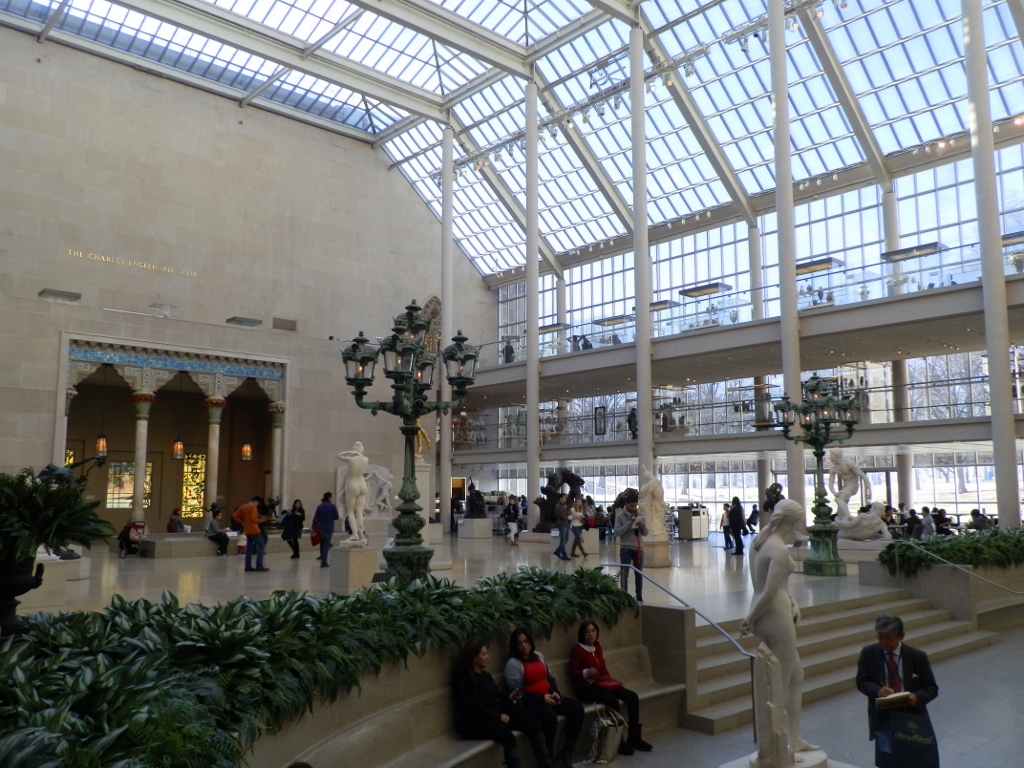 Charles Engelhard Court
Charles Engelhard Court
This roofed courtyard is situated within the museum’s American Wing and among other artwork it also exhibits some glass panels done by Tiffany. Or let me be more precise – the author of these panels is the son of the founder of the famous company Tiffany & Co. with the name of Louis Comfort Tiffany. As an artist and designer, he worked in particular with stained glass.
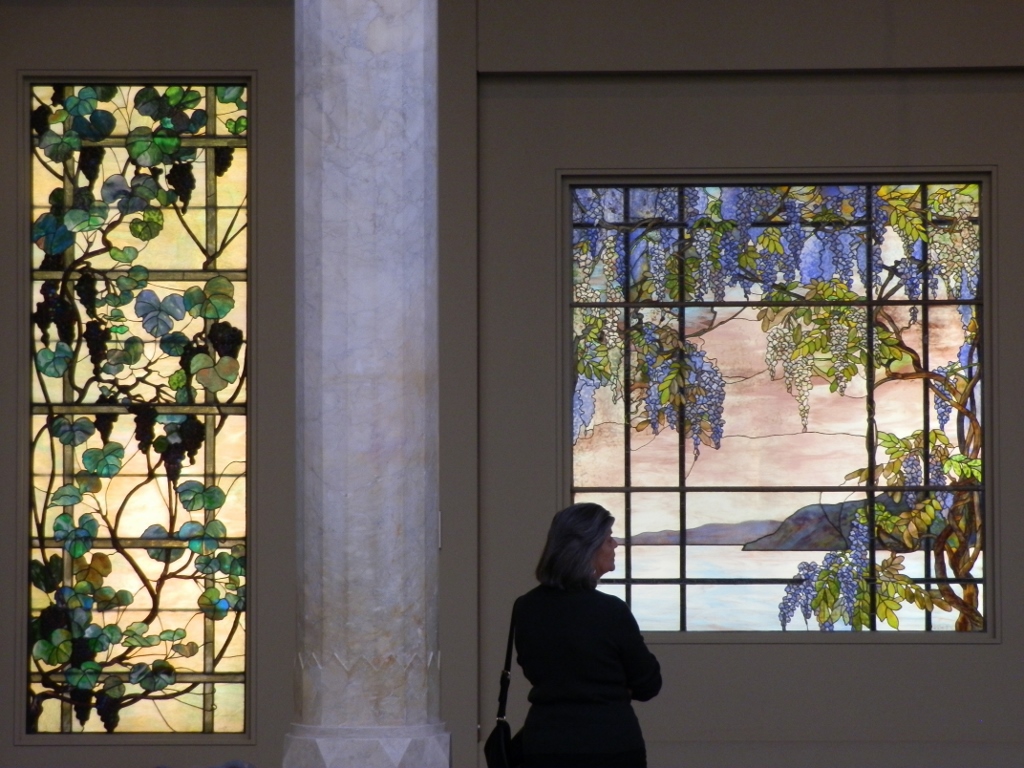 Grapevine Panel and View of Oyster Bay by Louis Comfort Tiffany
Grapevine Panel and View of Oyster Bay by Louis Comfort Tiffany
Then I came to the part called the Egyptian Art and there I first came across the Temple of Dendur. Namely, in 1965, Egypt gave this small temple from year 15 BCE to the USA as a gift and the temple eventually ended up in the Metropolitan Museum of Art.
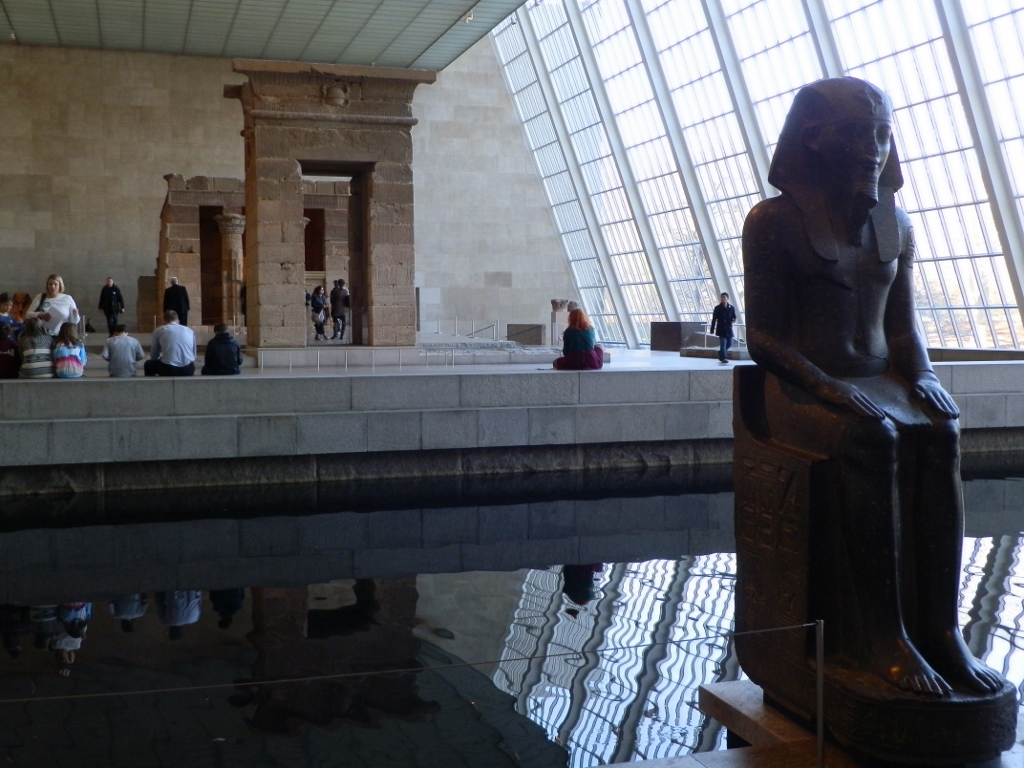 Temple of Dendur
Temple of Dendur
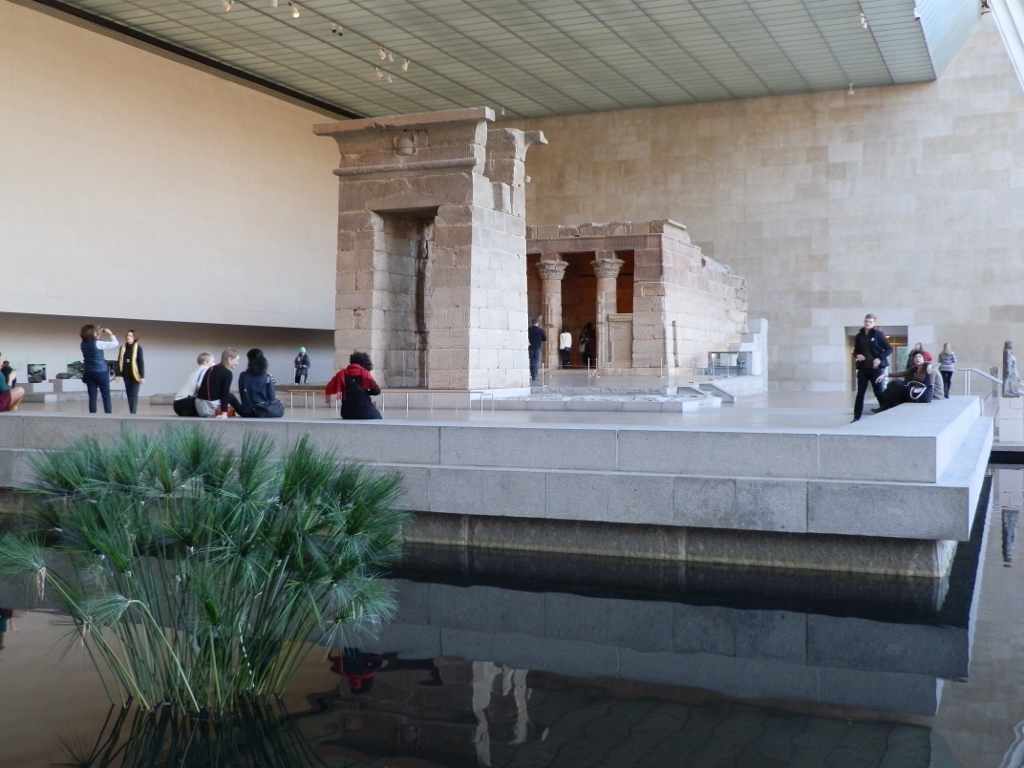 Temple of Dendur
Temple of Dendur
This temple is lit particularly nicely because it is located in one of the spacious halls protected by a glass wall. On the other side of the wall it was possible to see the nice blue sky and parts of New York.
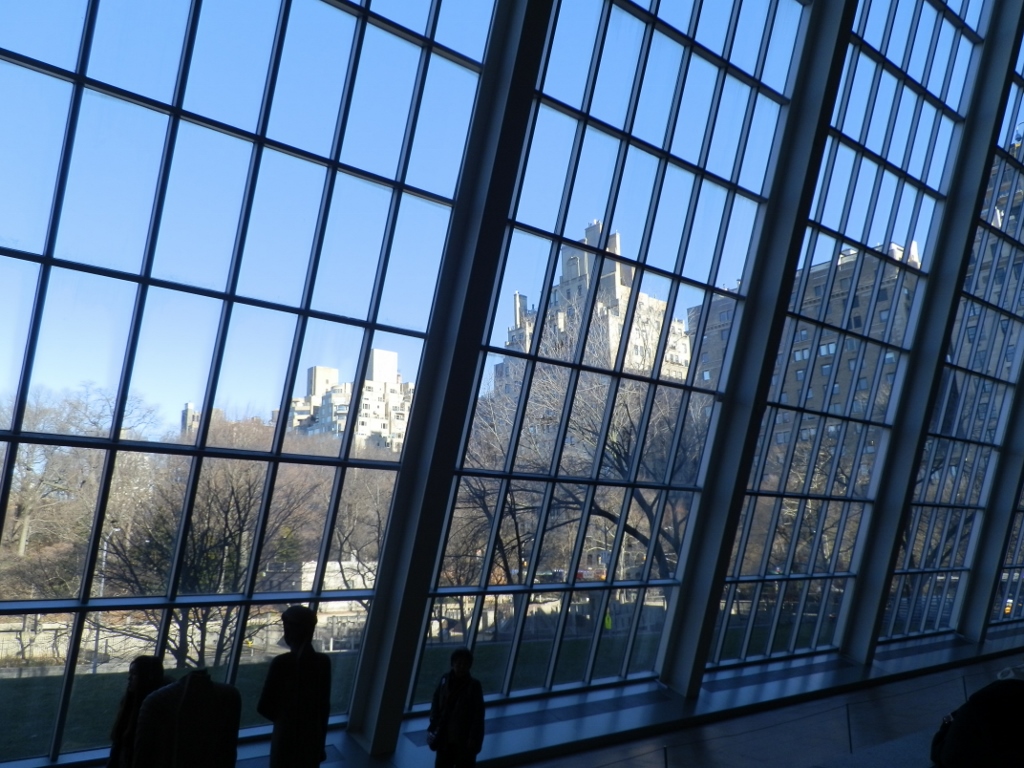 View from the hall with the Temple of Dendur
View from the hall with the Temple of Dendur
I walked some more around the section with the Ancient Egyptian and Mesopotamian Arts, and then I came again to the part with the Impressionists. Here I saw pieces by Renoir, Degas, Monet, van Gogh, Gauguin, Seurat, Pissarro and others.
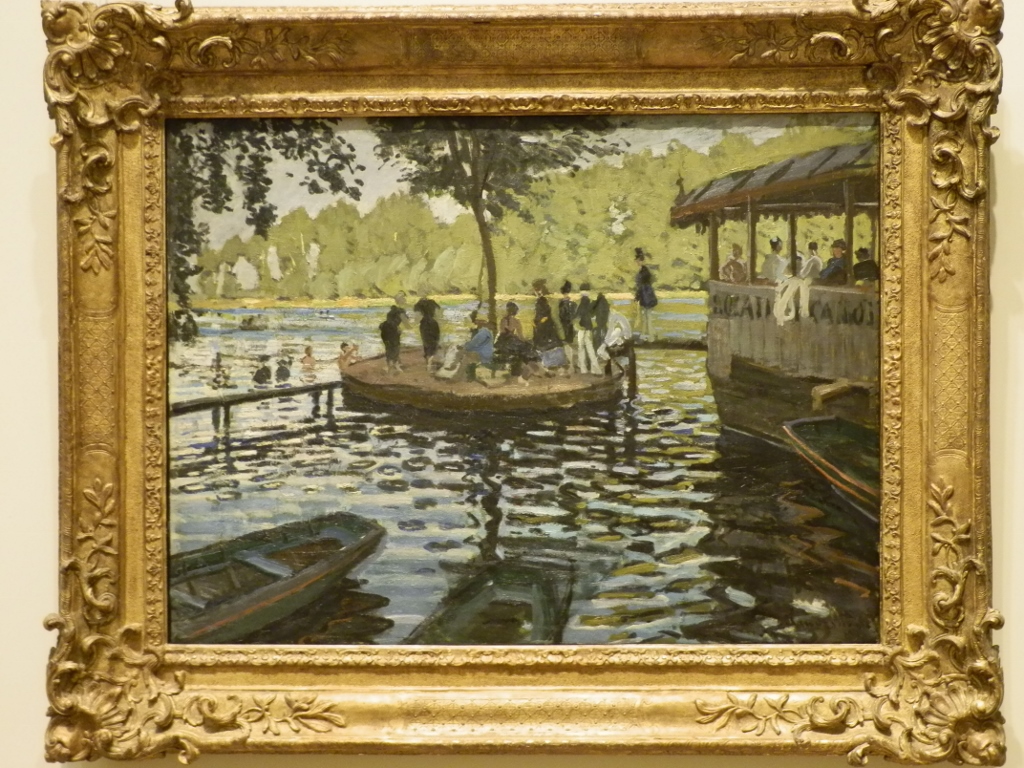 Claude Monet: La Grenouillere
Claude Monet: La Grenouillere
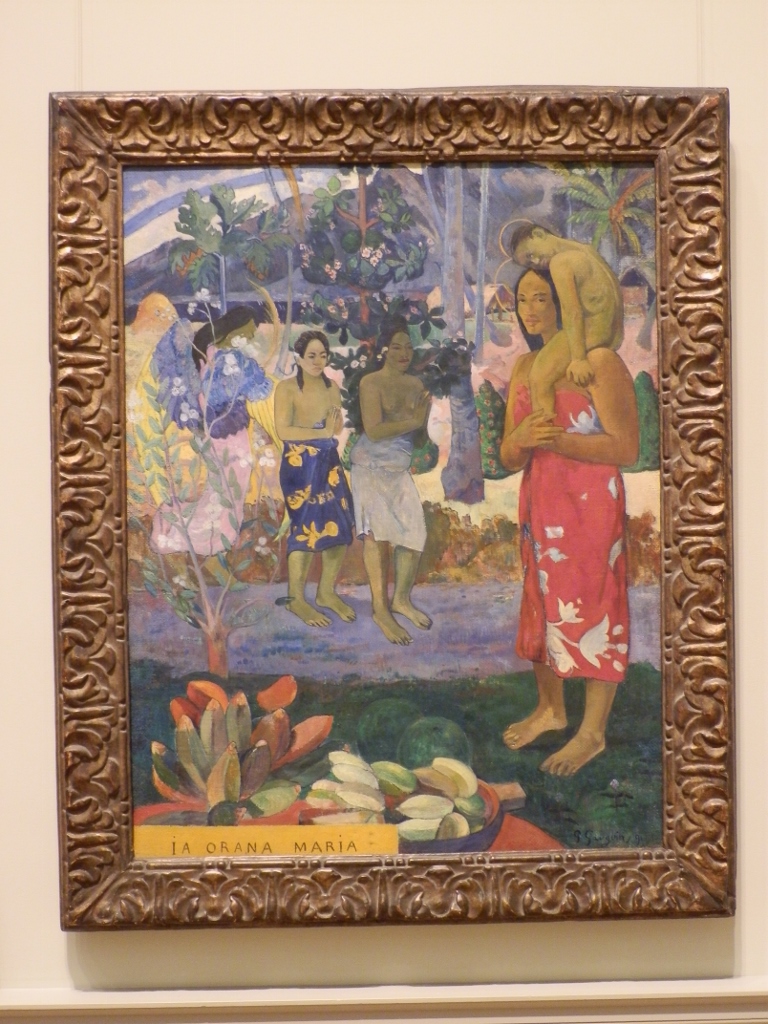 Paul Gauguin: Ia Orana Maria
Paul Gauguin: Ia Orana Maria
 Vincent van Gogh: Wheat Field with Cypresses
Vincent van Gogh: Wheat Field with Cypresses
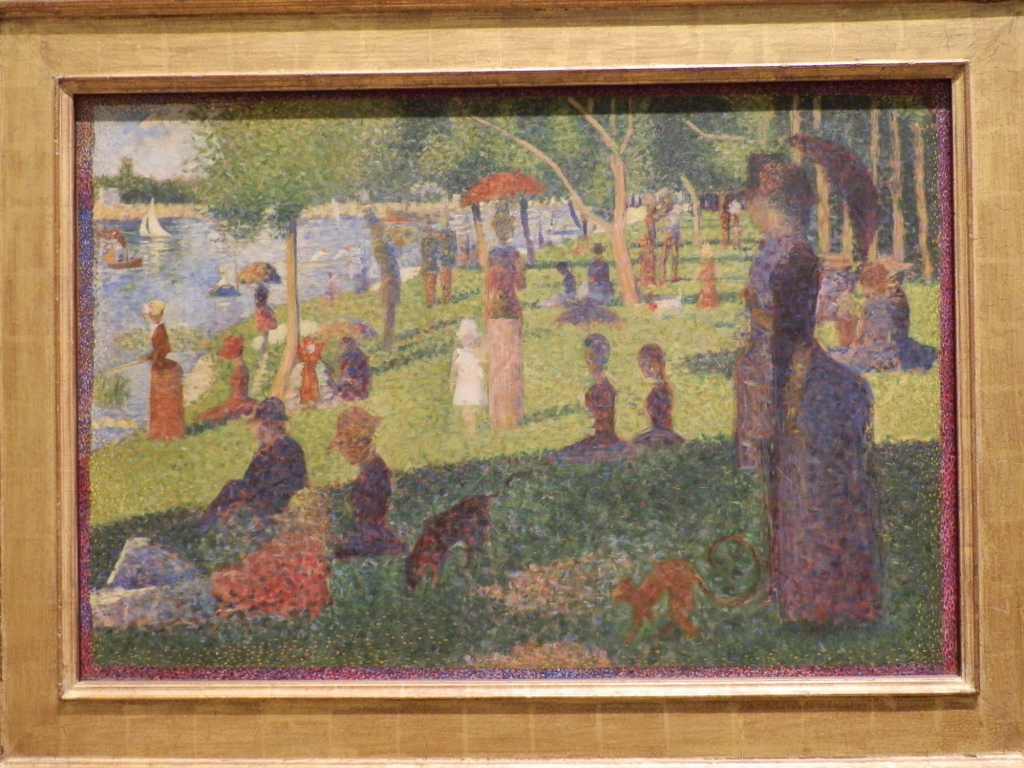 Georges Seurat: A Sunday on La Grande Jatte
Georges Seurat: A Sunday on La Grande Jatte
Among other artwork, there was also Degas’s “The Little Fourteen-Year-Old Dancer.” This is in fact a 1922 cast, while another one kept at the Museum d’Orsay can be seen in my story about Paris (https://www.svudapodji.com/en/paris-7/).
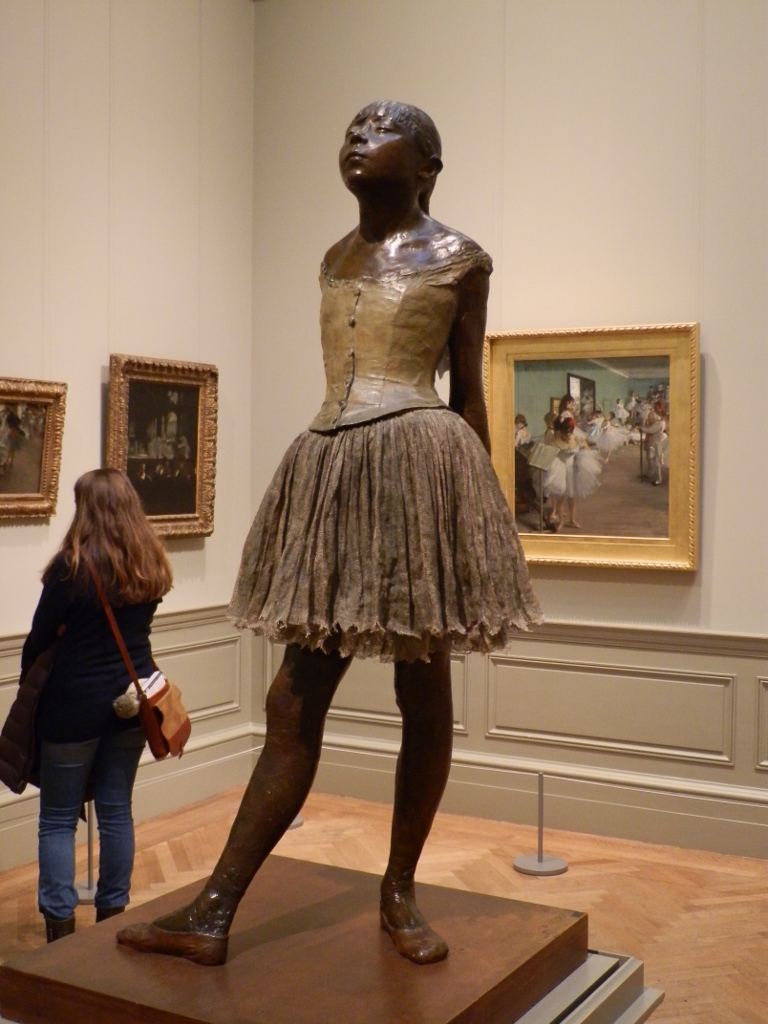 Edgar Degas, Little Dancer of Fourteen Years
Edgar Degas, Little Dancer of Fourteen Years
Then I went to the upper floor of the museum and continued with my visit. In this way I could see many new places and exhibits, as well as some already seen.
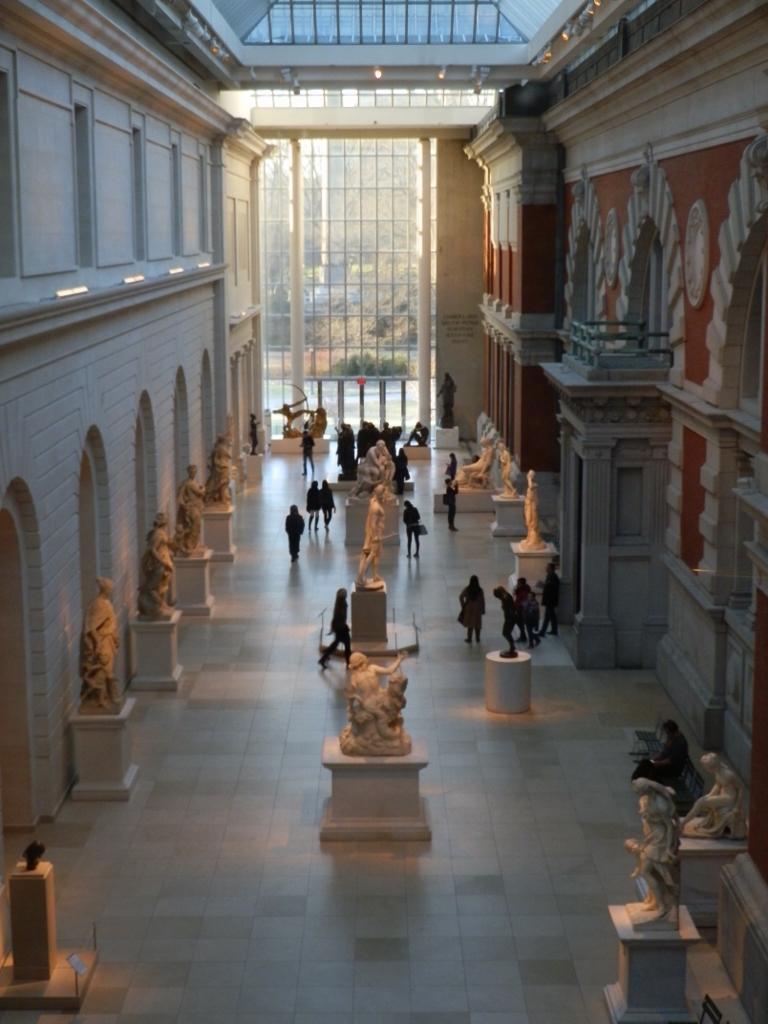 One of the roofed “courtyards” within the museum – Rodin’s Burghers of Calais are far back
One of the roofed “courtyards” within the museum – Rodin’s Burghers of Calais are far back
In one section I came across an exhibit that showed an inner courtyard of a European house (I think this was from Italy) and it all looked truly impressive. During the 20th century, wealthy Americans were not short of cash by any stretch of the imagination and thus a myriad of artistic pieces, as well as entire structures, such as this one, were bought around the world either for private collections or for museums.
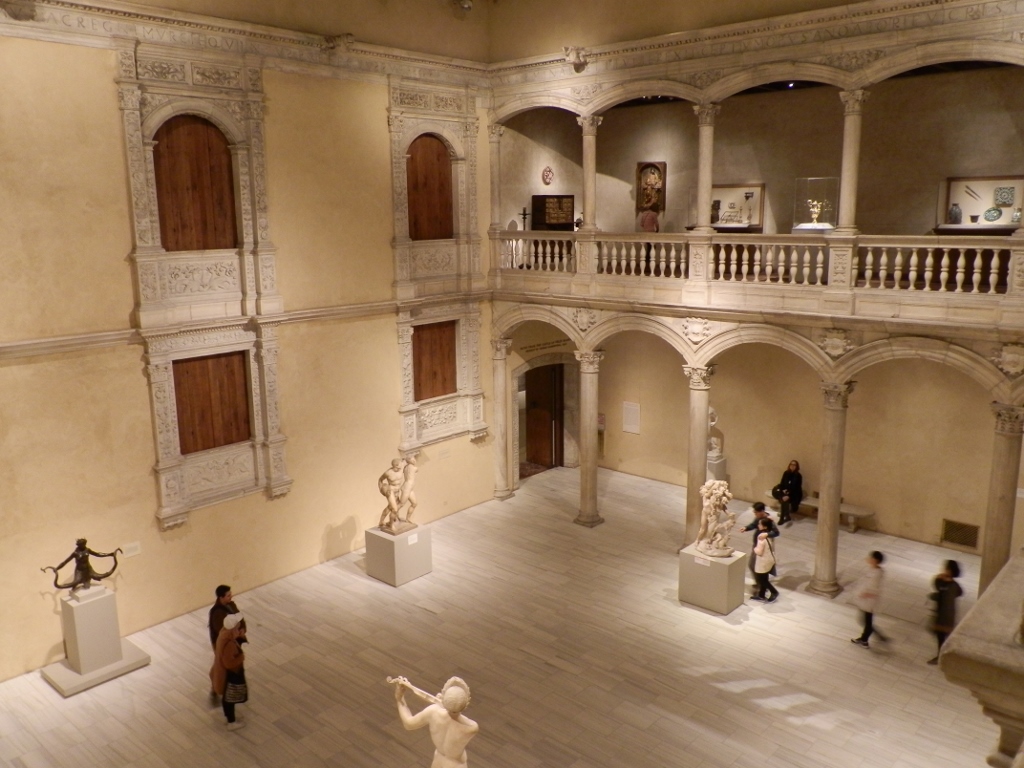 A courtyard from “old” Europe
A courtyard from “old” Europe
And then I entered into a part that showed paintings done by old European masters. Among others, there were Pieter Bruegel the Elder, Vermeer, Rembrandt, El Greco and etc.
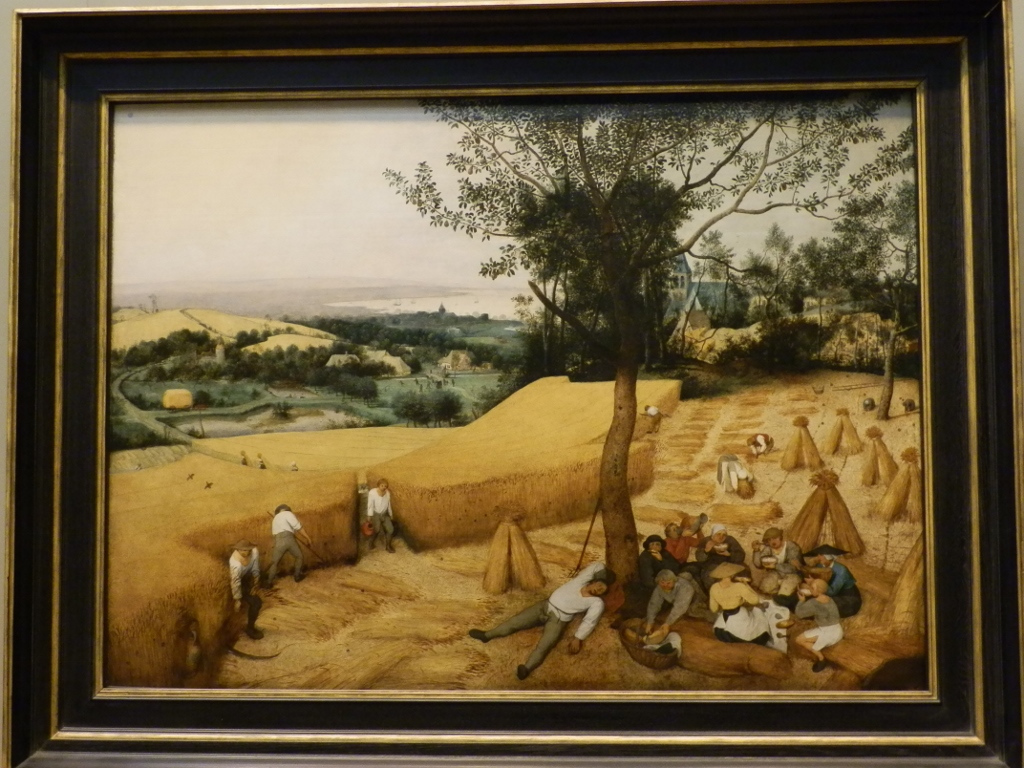 Pieter Bruegel the Elder: The Harvesters
Pieter Bruegel the Elder: The Harvesters
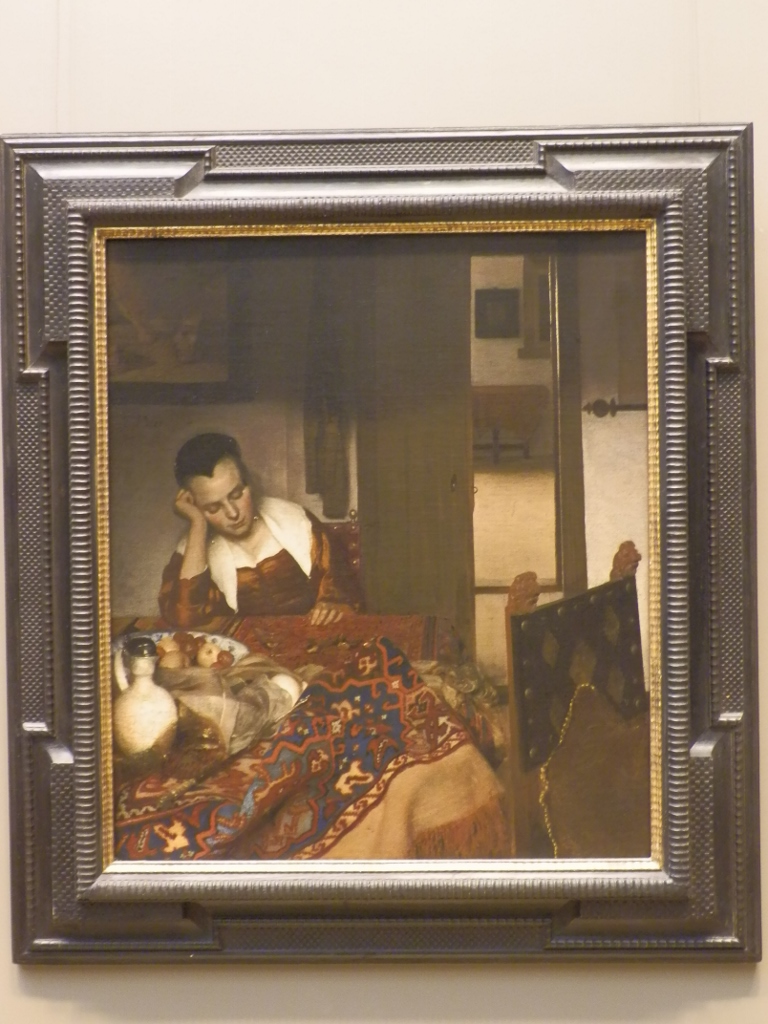 Johannes Vermeer: A Maid Asleep
Johannes Vermeer: A Maid Asleep
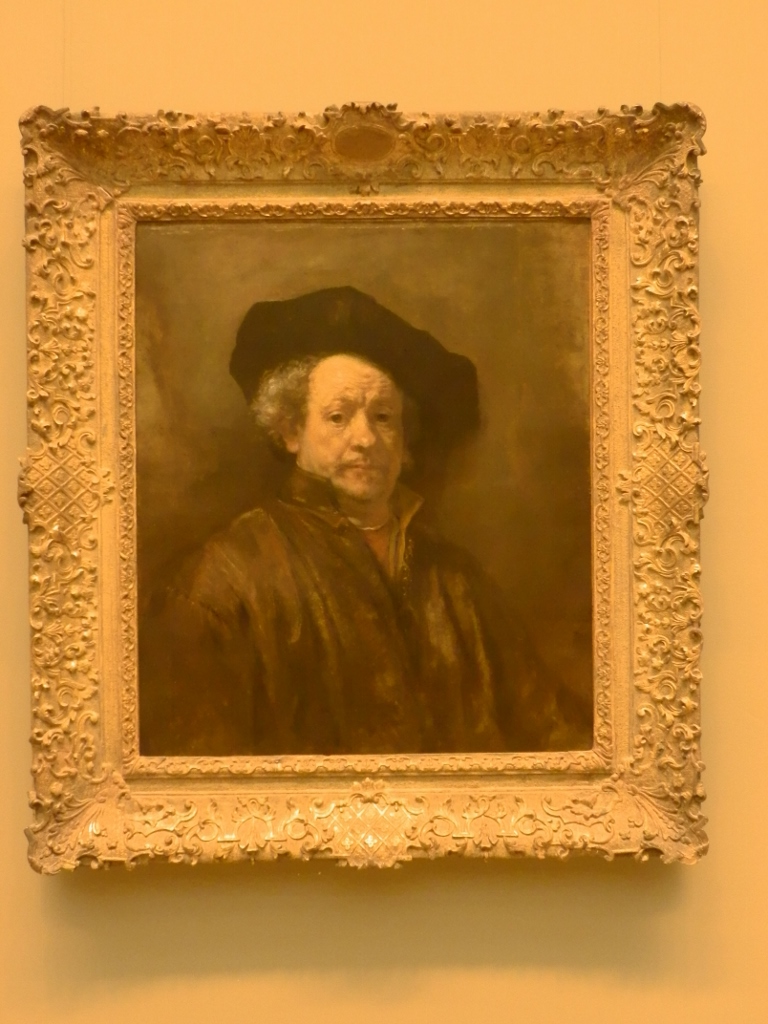 Rembrandt: Self-Portrait
Rembrandt: Self-Portrait
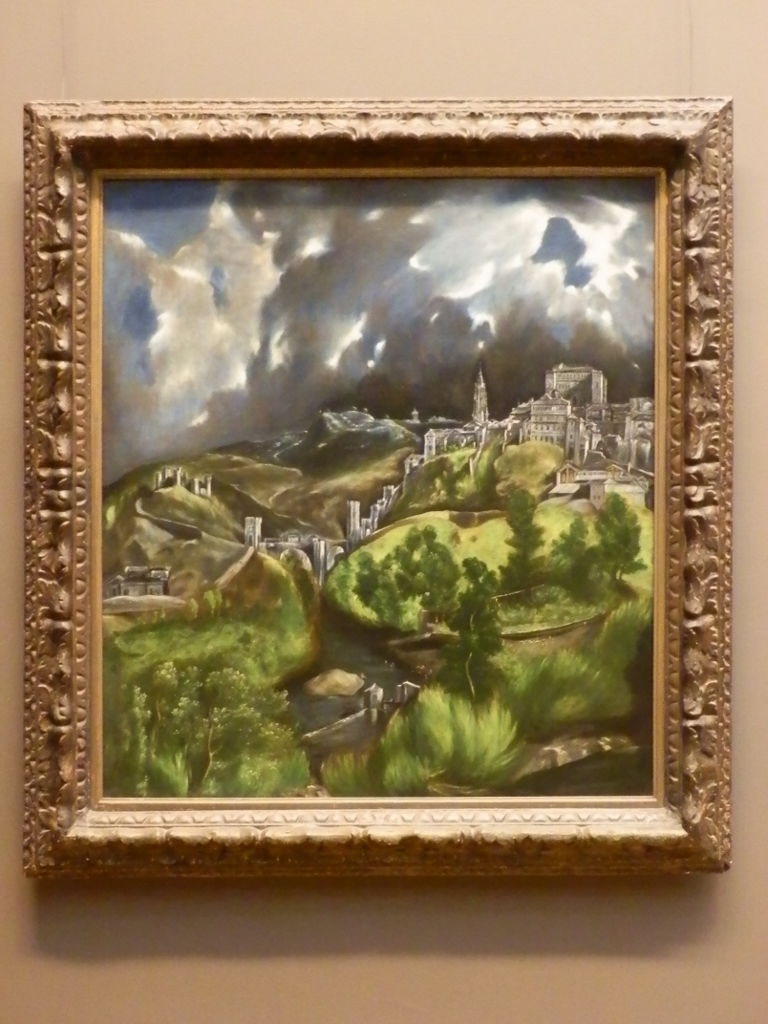 El Greco: View of Toledo
El Greco: View of Toledo
In one spot, where otherwise Vermeer’s “Woman with a Water Jug” is normally displayed, there was a note during my visit saying that the painting was on loan to some museums in Japan as a part of an exhibition dedicated to Vermeer. This is also one of the frequent practices among museums, since this helps promote the art of the greatest masters.
During my walk around the upper floor, I came across Charles Engelhard Court again and the sunlight clearly showed that the Sun was soon to set.
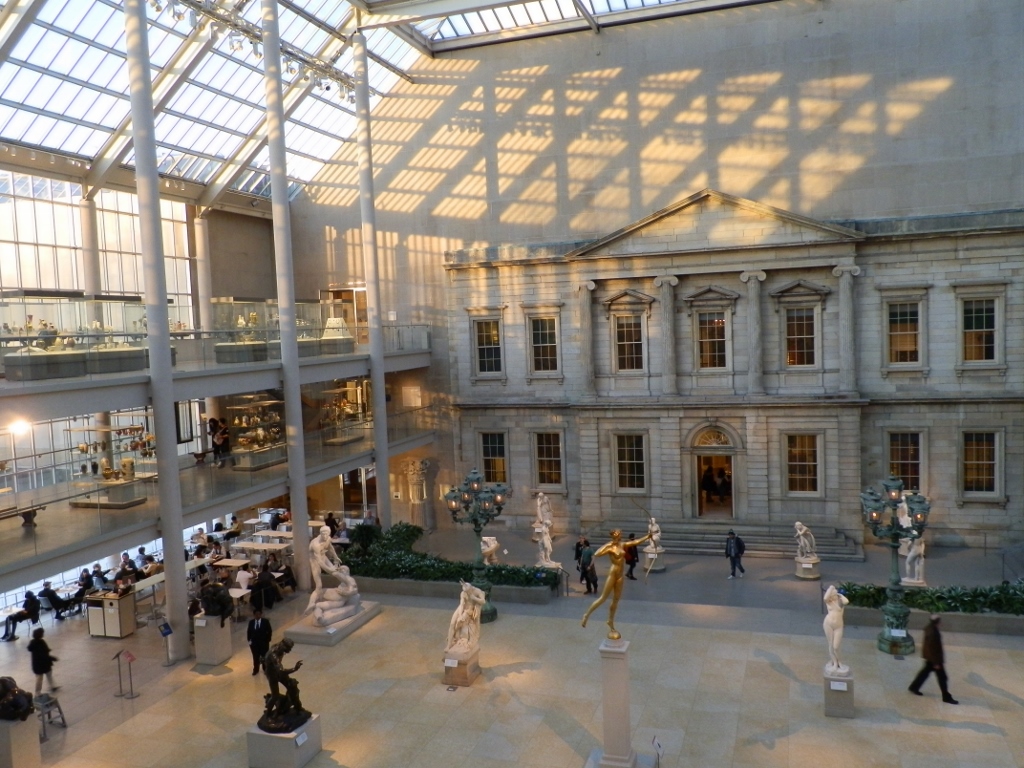 Charles Engelhard Court, view from the upper floor
Charles Engelhard Court, view from the upper floor
Not long after, I headed for the exit from the Metropolitan Museum of Art.
As opposed to the American Museum of Natural History where there were some fabulous parts, as well as some elements I found disappointing, everything at the Metropolitan Museum of Art was spectacular and I truly enjoyed it very much. Since I spent the whole day walking around the museum, I was completely exhausted in the end, as well as very content. When I got out into the street, it was around 5 pm, but there was still some daylight, so I simply continued walking along the 5th Avenue.